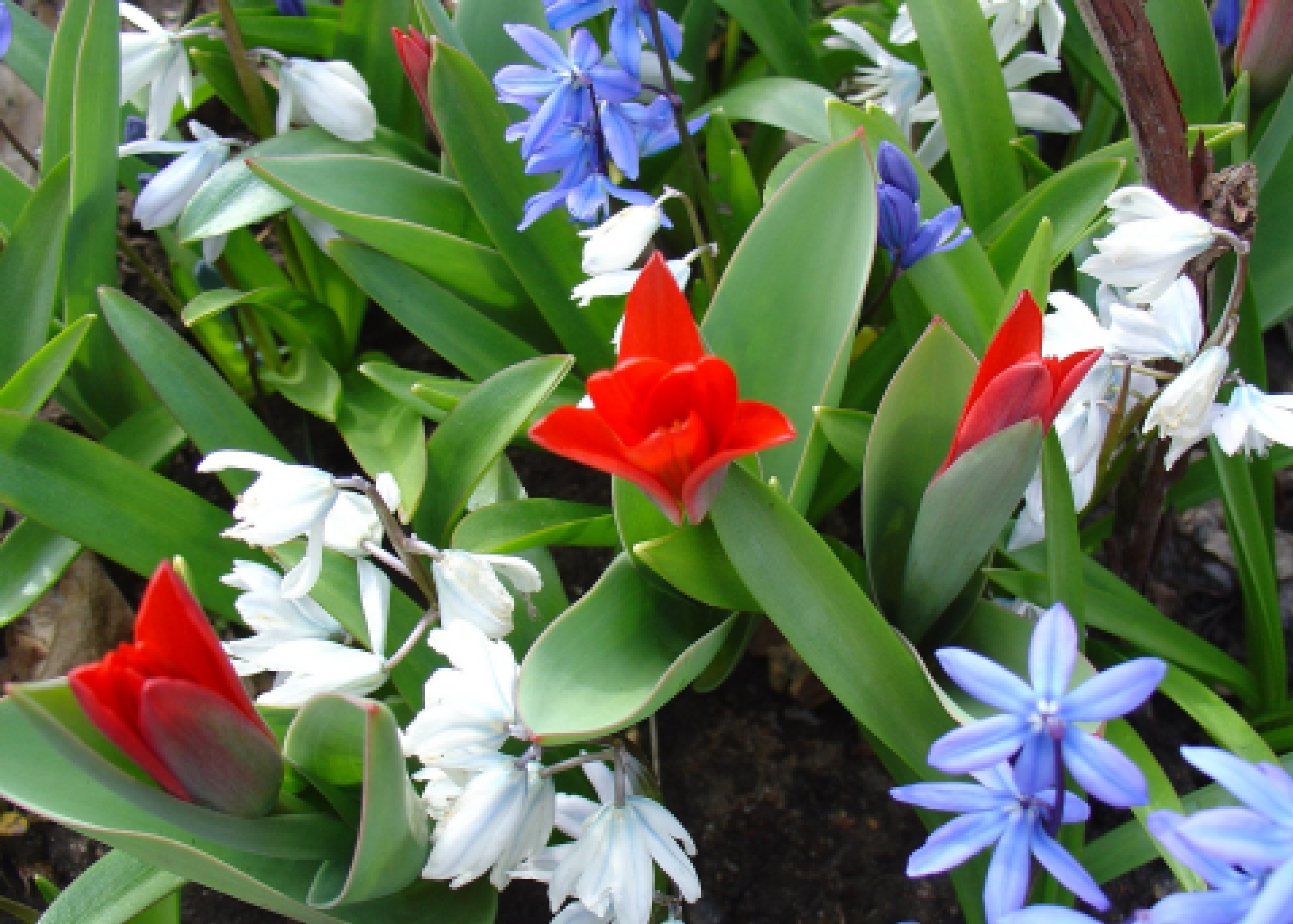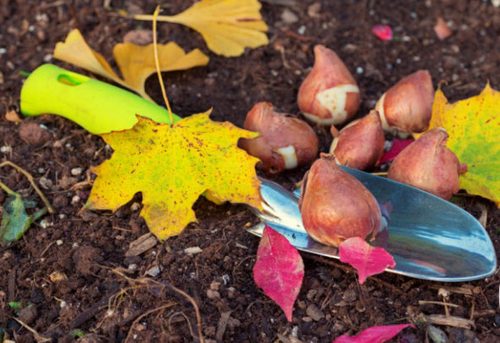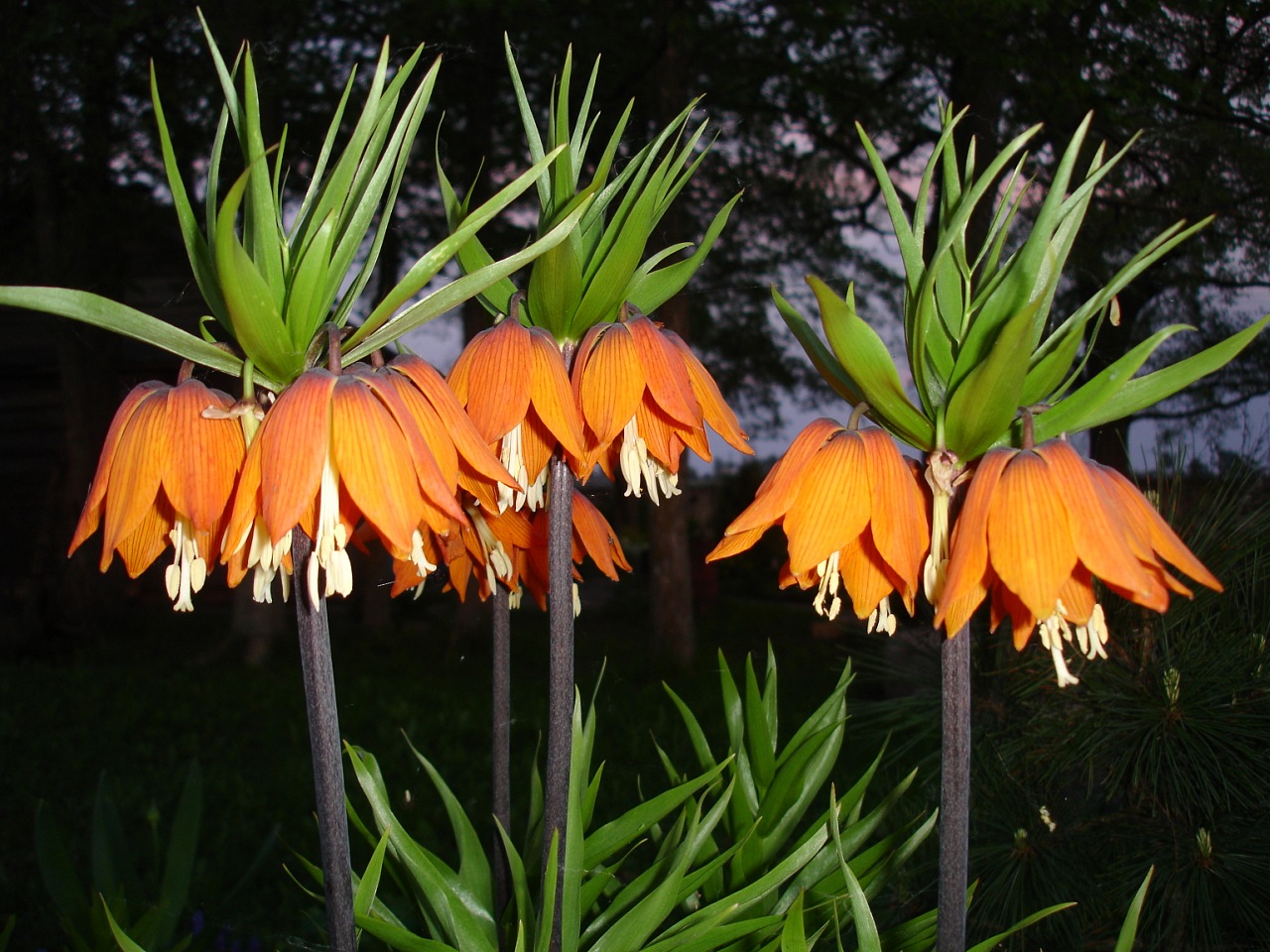When the snow begins to melt and the first signs of the coming spring appear, the corresponding signals are given by many plants, including the scilla, which is known as the woodland. In spring, this unusual flower demonstrates all its power, finding its way in barely thawed soil.
Scylla attracts the attention of specialists, because until now botanists have not come to a consensus as to which group it is correct to attribute this plant to - the family of Liliaceae, Asparagus or Hyacinths. And although, each of these families have their own morphological features, they have common properties. The genus of redwood is quite numerous and includes more than 85 species. The usual habitats of this plant are Europe, as well as Asia and Africa.
Content
Types of woodlands
Scylla is a fairly large family, which presents very interesting species with their own characteristics.
- Siberian forest most often found in the forests of Europe, as well as on the rocky slopes and mountain glades of the Caucasus. This stunted plant usually grows up to 30 cm. Propagated by self-seeding;
- type of tubergen it stands out for its miniature size, however, despite this, it grows a rather large flower. Flowering of this species of blueberry begins in the second half of April. Because of its original design, it is often used in landscape design;
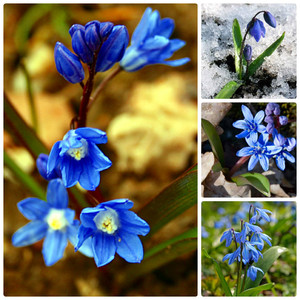 double-leaved forest fully justifies its name, since it has wide and long leaves. The peduncle looks especially attractive, since it can have up to 10 different shades. Therefore, it is not uncommon to find a double-leaved forest with white, pink, blue flowers;
double-leaved forest fully justifies its name, since it has wide and long leaves. The peduncle looks especially attractive, since it can have up to 10 different shades. Therefore, it is not uncommon to find a double-leaved forest with white, pink, blue flowers;- Bukhara view not so often can be found in gardens, since it grows in very few places in nature. You can only see it high in the mountains. The first flowers of this species of woodland bloom in late April-early May, but pretty soon it sheds its leaves, accumulating strength for the dormant period;
- autumn forest most often seen in the steppes of the Crimea and the Caucasus. Unlike traditional scilla species, it blooms at an unusual time - late July-early August.
Siberian Proleska: photo and description, species features
 Even an inexperienced florist can recognize the Siberian Scylla. The characteristic features are elongated, tall leaves with parallel veins. Flowers of this species of scrub appear in the form of symmetrical rays. One flower includes six petals... The choice of color shades is rather limited and includes blue, cyan, white. The flower of this species is small and has a diameter of 1.5–3 cm.
Even an inexperienced florist can recognize the Siberian Scylla. The characteristic features are elongated, tall leaves with parallel veins. Flowers of this species of scrub appear in the form of symmetrical rays. One flower includes six petals... The choice of color shades is rather limited and includes blue, cyan, white. The flower of this species is small and has a diameter of 1.5–3 cm.
The bulb, which reaches a diameter of 2 cm, is an important part of the plant as it accumulates nutrients during the growing season. The first flowers of the Siberian Scylla open in mid-spring, but in the summer the plant enters the dormant stage. Flowering is short and does not exceed 20 days.Reproduction occurs due to pollination by insects - bumblebees and bees.
Siberian redwood is a light-loving plant, therefore, during the period of bad weather, the flowers close. The top of the leaves is decorated with a light capcontaining cells of mechanical tissue, thanks to which the scilla of this species manages to break through the frozen soil, compressed melt snow and ice crust. Reproduction takes place by means of seeds, which are taken away by ants.
Subspecies of Siberian redwood
Within this type of scilla, several subspecies can be distinguished.
- the Siberian subspecies most often grows in the forest-steppe zone. In plants, a medium-sized bulb is formed, reaching a diameter of 2–3 cm. The flower arrow grows elongated and has a length of 12–15 cm. The characteristic color of the leaves is light green. Flowers of this subspecies reach 2 cm in diameter. Flowering begins in the second half of April;
- The white species of Siberian Scylla is quite unpretentious, in which up to 5 children can form during the growing season. The flower arrows are small enough and do not grow more than 10 cm. The leaves are pale green in color. Against their background, flowers with a white tint, which reach a diameter of 2 cm, look contrasting;
 a great rarity in flower arrangements is the Siberian beetle species, which has a pale pink or pale blue color;
a great rarity in flower arrangements is the Siberian beetle species, which has a pale pink or pale blue color;- The habitat of the Armenian subspecies is the meadows of the Caucasus and northeastern Turkey. Favorite habitats are shady areas, where they most often grow in large groups. Flower arrows are large enough and grow up to 25 cm in length. Flowers are bright blue in color, their number on one plant does not exceed 4;
- the Caucasian subspecies is most widespread in the forests of the Transcaucasus. The bulb is rather small and reaches a diameter of 1.5 cm. High peduncles with blue-violet flowers stand out against the background of the whole plant;
- the latest achievement of breeders is Spring beauty. This plant is characterized by the presence of powerful blue-violet arrows, in which at least 5 flowers with a diameter of 3 cm are formed. Due to the lack of the possibility of setting seeds, this Scylla can only reproduce in children. Forms excellent compositions when grown together with White Creeper.
Planting and leaving
Growing a scilla on a site is not such a difficult task to implement, although there are subtleties here that must be taken into account.
Optimal location
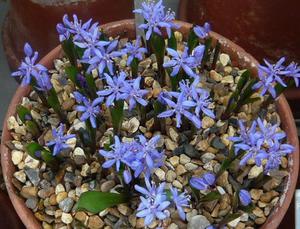 Siberian redwood is a light-loving plant, but it blooms beautifully under partial shade conditions. You just need to make sure that the location chosen for her was protected from direct sunlight during the day... Otherwise, in such conditions, she will not survive. Swampiness and waterlogging of the soil have a depressing effect on the development of plants. In order to achieve early flower formation in Siberian redwood, it is recommended to plant it in areas located on the southern slopes. In partial shade, the plants feel uncomfortable, so they begin to bloom late.
Siberian redwood is a light-loving plant, but it blooms beautifully under partial shade conditions. You just need to make sure that the location chosen for her was protected from direct sunlight during the day... Otherwise, in such conditions, she will not survive. Swampiness and waterlogging of the soil have a depressing effect on the development of plants. In order to achieve early flower formation in Siberian redwood, it is recommended to plant it in areas located on the southern slopes. In partial shade, the plants feel uncomfortable, so they begin to bloom late.
Suitable soil
Best of all, two-leaved scrub develops in an area dominated by loose soil, fertilized with leaf humus. It can also be grown on dry sandy soil, however, in this case, a deeper planting is required. Many growers practice growing two-leaved woodland under indoor conditions., but in this case, drainage must be laid on the bottom of the pot before planting. The most unsuitable place for growing Siberian cabbage is an area with a predominance of acidic soils.
Best of all, Siberian redwood grows on slightly acidic or neutral soil.Mulching has a positive effect on its development, when the root zone is covered with available materials like leaves, bark of deciduous trees, straw, which reduce moisture evaporation and preserve the beneficial properties of the soil. At the same time, it is not recommended to use the needles and bark of coniferous trees as mulch.
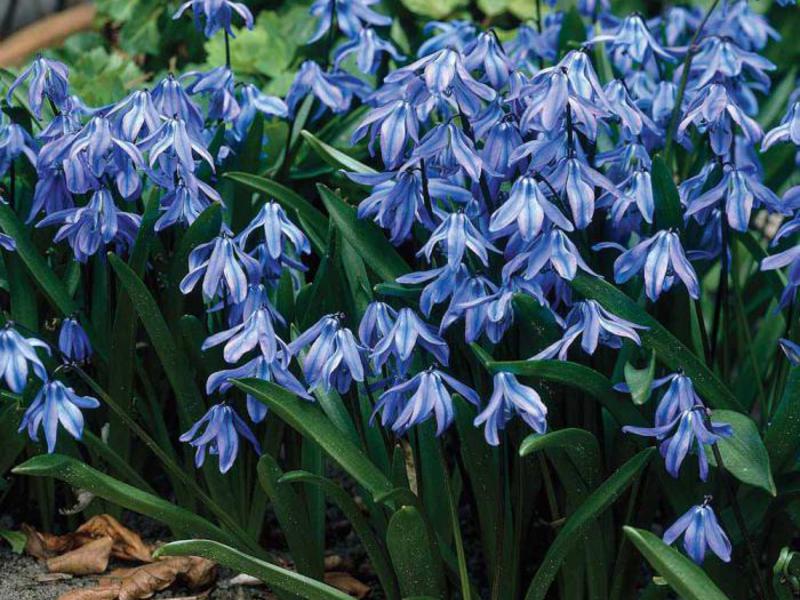
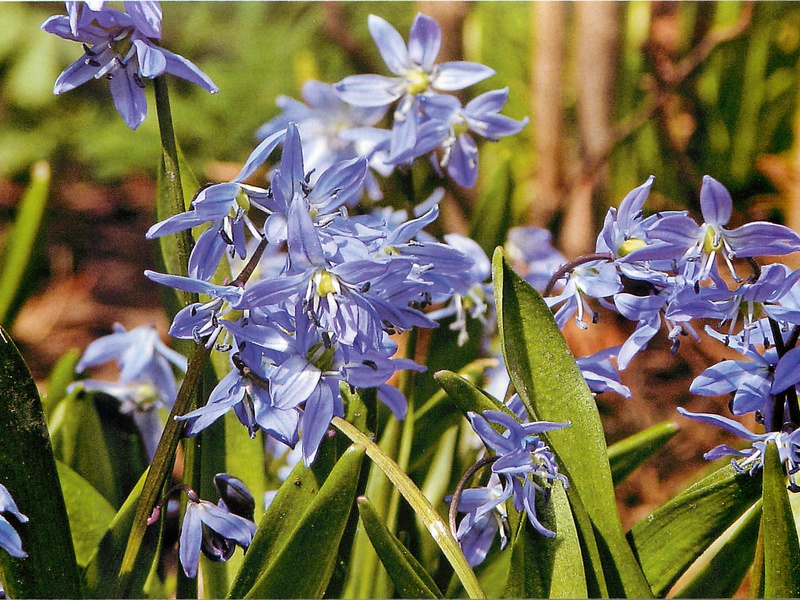
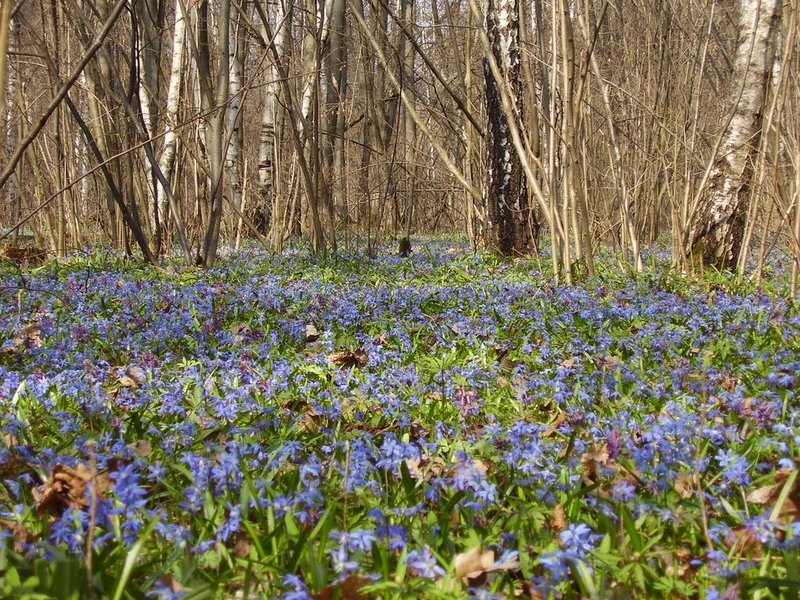
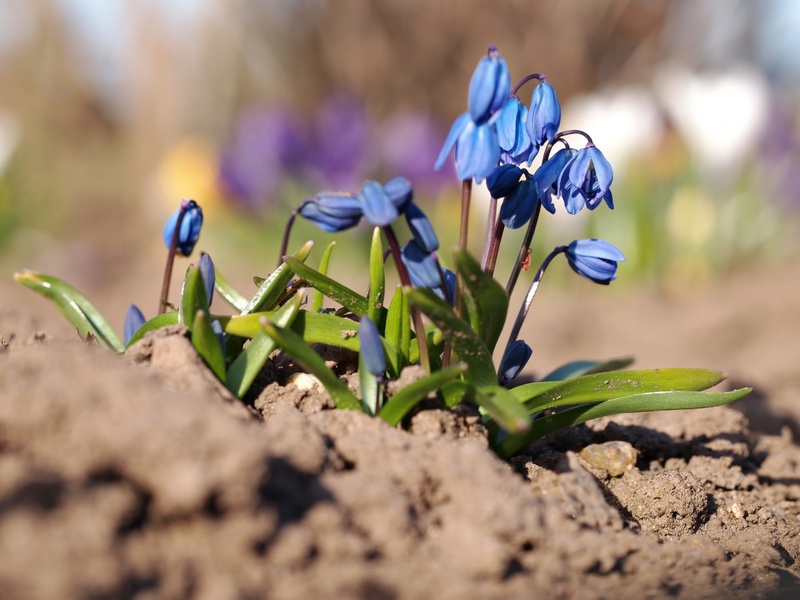
Fertilizers
Under natural conditions, wild species of the woodland have to grow without special fertilizers. However, with regard to garden species feeding are required... When carried out regularly, plants grow strong, bloom longer, and also become more resistant to disease.
- it is best to start fertilizing the soil in early spring, before the sap flow begins. It is also effective to carry out top dressing in late autumn;
- as a rule, special fertilizers are not used for feeding. Many gardeners limit themselves to a mineral supply that includes nitrogen, potassium and phosphorus. In the fall, it is recommended to apply granular fertilizers to the soil, in the spring - liquid solutions.
How do woodland flowers reproduce?
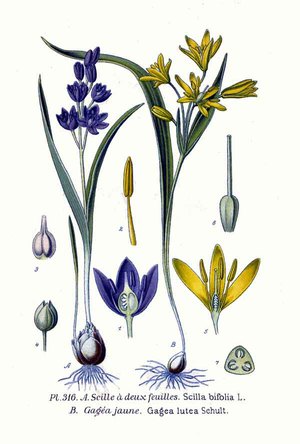 Photos of the plant should not create an impression in relation to the scilla that it is very easy to grow it. Even breeding woodland requires certain rules to be followed.
Photos of the plant should not create an impression in relation to the scilla that it is very easy to grow it. Even breeding woodland requires certain rules to be followed.
For breeding Siberian cabbage, bulbs and seeds can be used as planting material. In the latter case, no special events are required, since reproduction occurs as a result of their self-seeding... Typically, in one year, the bifuca leaf can form up to 4 bulbs. They are transplanted in the fall, preparing pits up to 8 cm deep, while the plants should be placed at least 5 cm from each other.
Given that the planted bulbs grow at different depths in spring, not all of them can be removed from the soil during transplantation. Therefore, it remains to get used to the fact that in the place where the woods were once planted, they will grow again and bloom for more than one year. For propagation of woodlands, you can use bulbs that have sprouted at the planting site for at least 3 years.
Small bulbs are not designed for long-term storage... Therefore, after digging from the ground, they must be planted within a month. Until the time has come for transplanting, large bulbs can be kept in peat until autumn, which must be placed in a cool room.
If a generative reproduction method is used, then only bulbs that have grown on the site for at least 2 years can be used for breeding.
Susceptibility to diseases and pests
In order not to create additional difficulties for yourself, which will require a certain amount of time and effort to fight diseases, it is also recommended inspect bulbs for potential signs of infestation before planting... The presence of holes on the tubers indicates that onion hoverfly larvae have penetrated into the bulb and will feed on it from the inside.
Therefore, if you come across such a planting material, then, most likely, the Scyllas that have grown from it will not live long. Having found signs of residence of the root onion mite, it is necessary to treat the soil with insecticides. Rarely, bears and beetles pass by the bulbs. The most effective method of dealing with them is mechanical destruction, and for this it is imperative to dig up the soil, as a result of which you can get rid of most of the larvae and adults.
Conclusion
Scylla attracts the attention of flower growers not only for her appearance, although she can amaze a novice grower. Among other types of ornamental plants, this flower stands out for its power, which it demonstrates in early spring, when it breaks through the still unmelted soil. Many experienced flower growers do not miss this opportunity in early spring, when all other plants are dormant, to enjoy the flowering of the scilla.
When growing, it is important not only to choose a well-lit place where a suitable soil composition should prevail. No less important for the Scylla are feeding, the regular application of which allows it to quickly enter the flowering stage.
